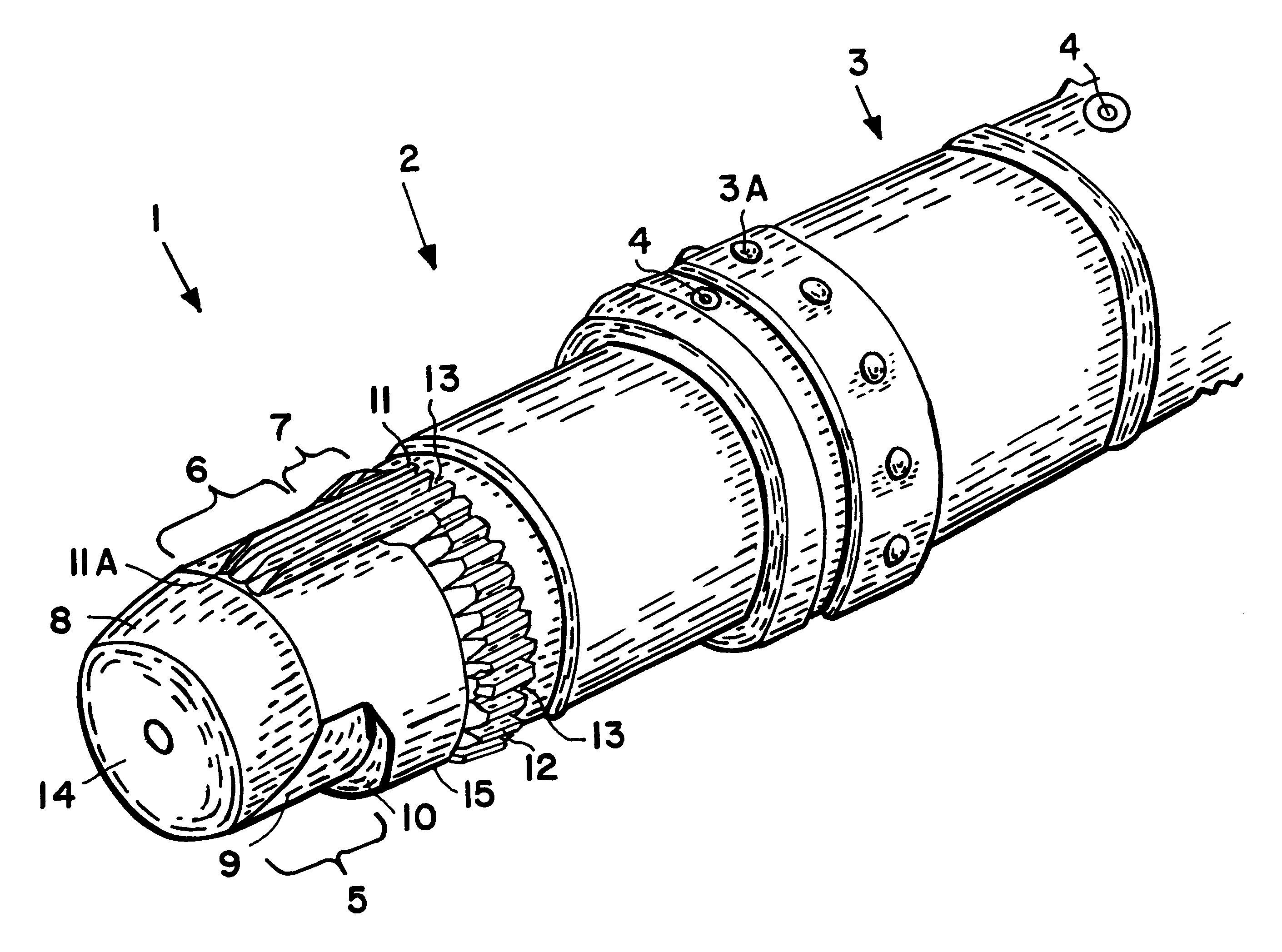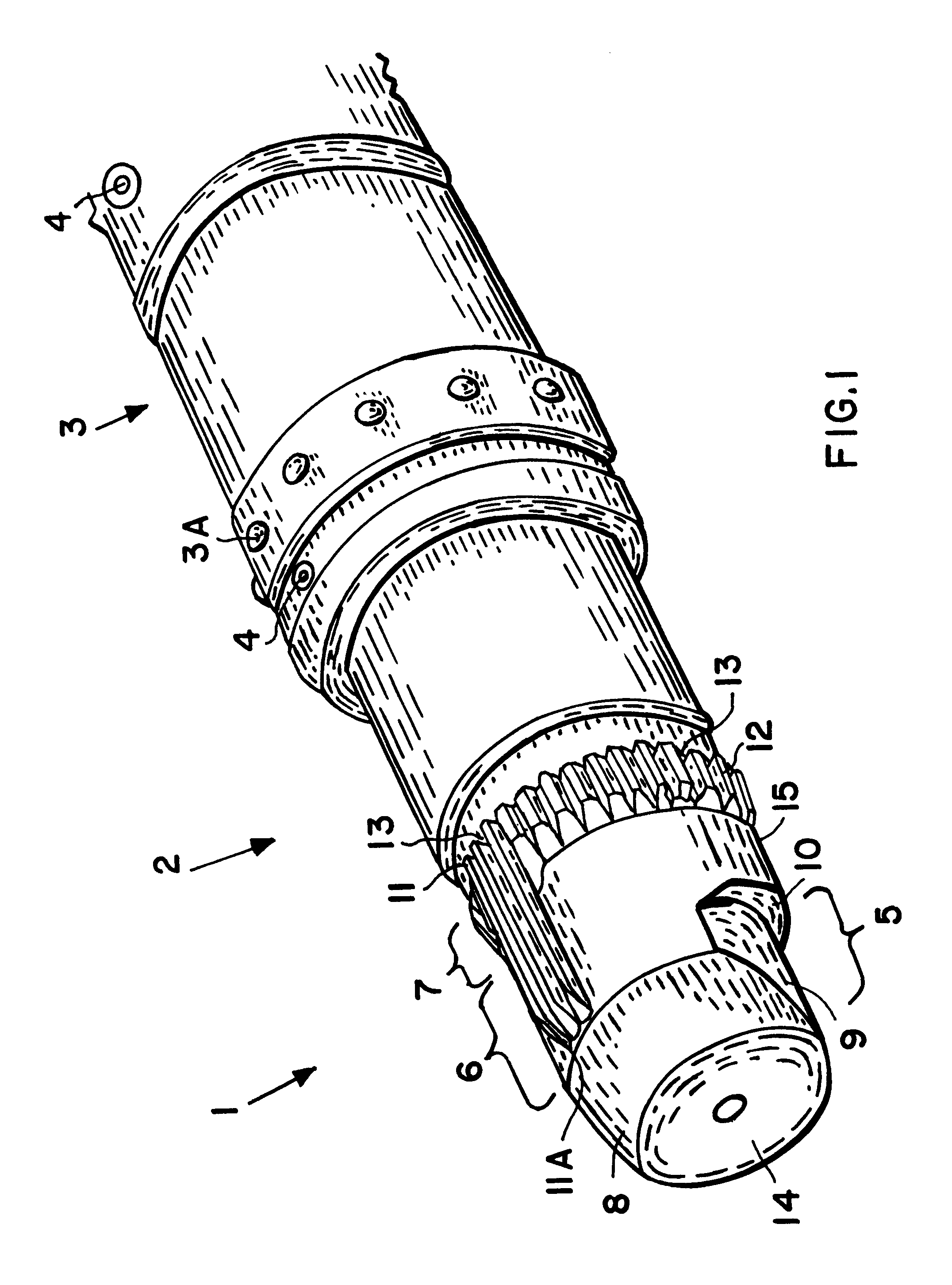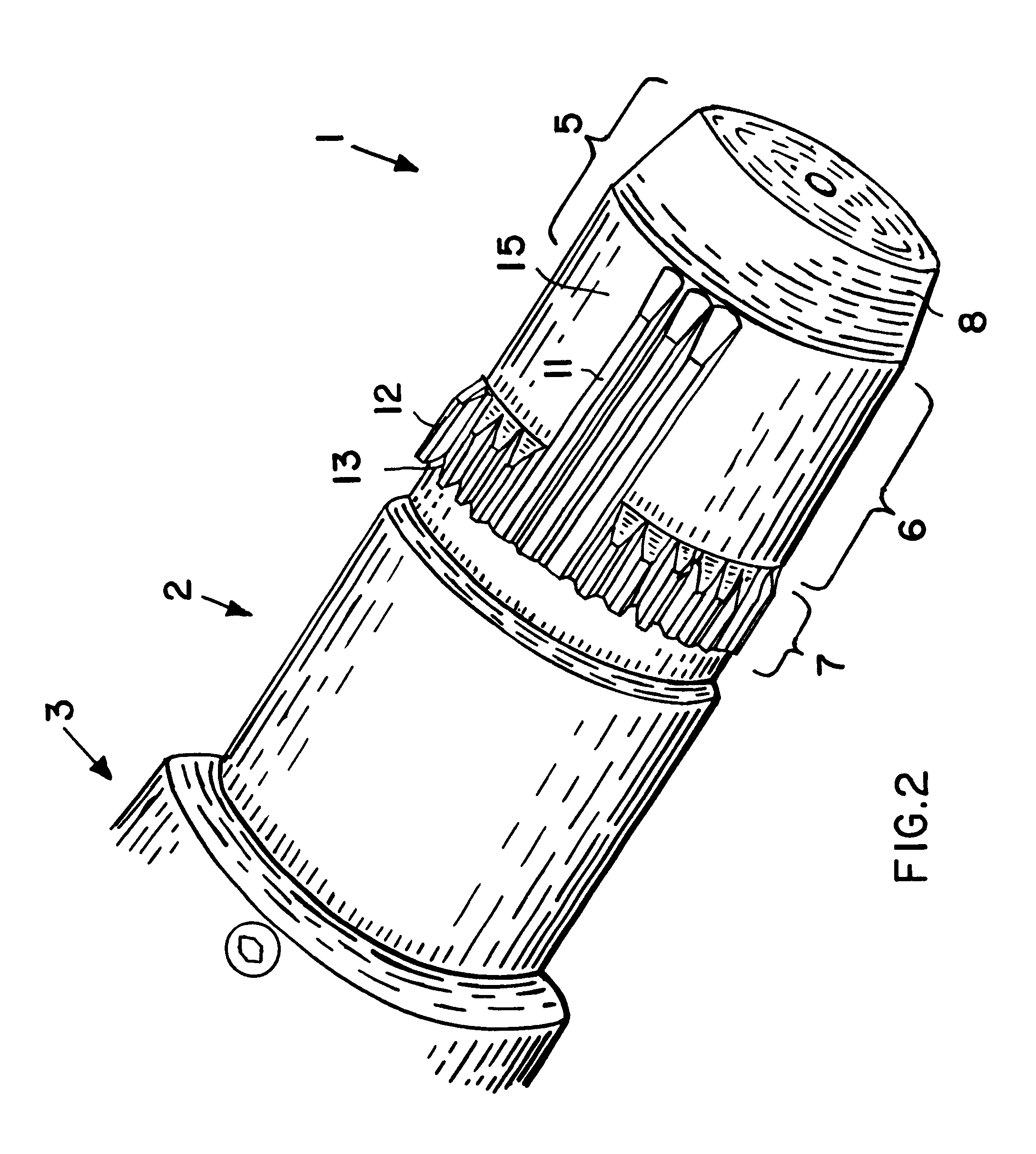Self-aligning splined male shaft head and engagement method
a splined male shaft head and self-aligning technology, which is applied in the direction of screw, interlocking clutch, coupling, etc., can solve the problems of not being able to insert the shaft head into the hub, not being able to wear the front edges of the spline teeth, and being difficult and problematic to achieve the connection
- Summary
- Abstract
- Description
- Claims
- Application Information
AI Technical Summary
Benefits of technology
Problems solved by technology
Method used
Image
Examples
Embodiment Construction
FIG. 1 shows a general schematic perspective view of a shaft head 1 according to the invention mounted or held in a shaft head holder or chuck 2 which in turn is mounted in or on a tool shaft 3. The shaft head 1 and the shaft head holder 2 may be a single integral piece, but are preferably separate pieces as in the present example embodiment, to allow a cost effective exchange of only the shaft head 1 in the event that it becomes worn or damaged over long term use, or to allow differently dimensioned splined hubs to be accommodated by simply changing the shaft head 1. The connections of the respective parts can be achieved by a form-locking plug-in shape of each part into the next part, and / or by securing with set screws 4 or the like.
The tool shaft 3 can be any rotating shaft that is to be releasably or temporarily connected to a rotatable hub. In the present example embodiment, the tool shaft 3 is the rotatable tool shaft of the inner tooling or upper tooling of a torque converter...
PUM
 Login to View More
Login to View More Abstract
Description
Claims
Application Information
 Login to View More
Login to View More - R&D
- Intellectual Property
- Life Sciences
- Materials
- Tech Scout
- Unparalleled Data Quality
- Higher Quality Content
- 60% Fewer Hallucinations
Browse by: Latest US Patents, China's latest patents, Technical Efficacy Thesaurus, Application Domain, Technology Topic, Popular Technical Reports.
© 2025 PatSnap. All rights reserved.Legal|Privacy policy|Modern Slavery Act Transparency Statement|Sitemap|About US| Contact US: help@patsnap.com



